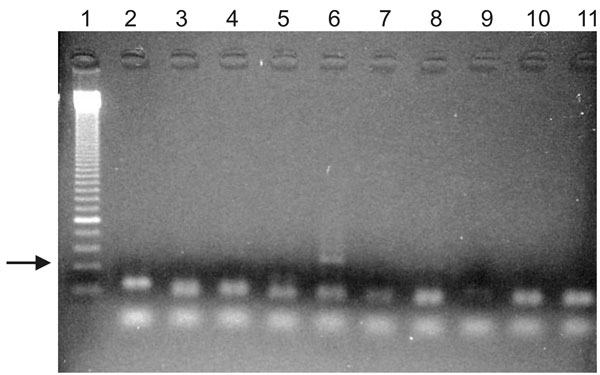Volume 14, Number 8—August 2008
Letter
Plasmodium falciparum in Ancient Egypt
Figure

Figure. PCR amplification of a 134-bp fragment of ancient DNA of Plasmodium falciparum in Egyptian mummies. Lane 1, molecular marker; lanes 10 and 11, 2 negative controls. One (lane 6) of 8 samples shows a positive amplification product (arrow). Specificity of the product was verified by sequencing.
Page created: July 13, 2010
Page updated: July 13, 2010
Page reviewed: July 13, 2010
The conclusions, findings, and opinions expressed by authors contributing to this journal do not necessarily reflect the official position of the U.S. Department of Health and Human Services, the Public Health Service, the Centers for Disease Control and Prevention, or the authors' affiliated institutions. Use of trade names is for identification only and does not imply endorsement by any of the groups named above.